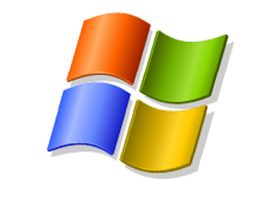|
XP vs. Vista: An Objective Comparison

Performance and Functionality
Historically, every version of Windows has had more overhead than the last, requiring a more powerful machine to run than the one before. Traditionally, this has been offset by improved functionality; each version adds its own bells and whistles that—hopefully—make life more convenient. What improvements, then, did XP and Vista each bring to the user experience?
XP's main improvement to the user experience was stability. The version it replaced in the consumer market—Windows ME—was widely reviled as the most unstable version of Windows yet. By switching over from the aging Win9x kernel to the newer and more stable Win NT 5 kernel, Windows XP eliminated a lot of the crashes and DLL Hell issues that had plagued users before. Driver rollback gave users the much-needed ability to revert back to an older version of a given driver, if the update did not produce the desired results. The addition of sub-pixel font rendering, known as ClearType in MS jargon, greatly improved the readability of text on LCD-based displays. DirectX 7 (and later DX9) greatly improved 3D graphics quality and performance. With Service Pack 2, XP also got improved integration with anti-virus and anti-spam software, as well as a fully functional software firewall. These changes were more evolutionary than revolutionary, but as a whole they served to make XP a more stable platform than its predecessors.
Vista brought a number of changes, both in end-user functionality and in "under the hood" functionality changes, among which are: newer versions of Internet Explorer and Windows Media player, and improved search functionality. Expanded speech recognition and text-to-speech functionality, improvements to memory management and process handling, and a whole new screen rendering framework were also included. The new Vista Desktop Window Manager replaces the older GDI screen-drawing interface altogether, effectively treating the screen as a 3d image. This allows for smoother screen-drawing, as well as amusing visual tricks like live thumbnails of minimized windows, Flip 3D, and using video files as desktop wallpaper. Windows Gadgets—mini programs that live on the desktop—give the user at-a-glance info, and make the desktop useful as more than a place to plop down a bunch of shortcut icons. Overall, Vista brings a number of badly-needed improvements to how Windows functions in day-to-day life.
Problems
Warts. Lumps. Flaws. Call them what you will, every OS has its defects, the places where it stumbles, comes up short, or just plain fails to deliver. XP and Vista both have a lot to recommend them, but they also have their fair share of problems.
XP's main faults centered around security. Being the first consumer-grade Windows version to be based on the NT kernel, XP had a combination of questionable security practices and powerful networking features that made it an irresistible target for malware authors. Prior to Service Pack 2, a Windows XP machine would find itself irretrievably compromised within minutes of being connected to an unprotected internet connection. The default behavior of giving new user accounts Administrator privileges only compounded this, and the severe crippling of non-admin user accounts meant that even conscientious users couldn't do much to proactively limit the damage. Service Pack 2 did much to fix this, by fixing the previously unusable Windows Firewall, and adding prominent notifications when anti-virus programs were missing or out-of-date. Even so, users can still find themselves horribly compromised with little-to-no warning, and frequent reinstalls are a depressingly common remedy to the numerous infections.
Much of Vista's early criticism has centered around stability, rather than security. The introduction of a new driver model, as well as heavy DRM provisions, served to bring back the sort of instability and frequent crashes that many users had hoped were left behind with WinME. Much of this has since been fixed, as hardware manufacturers have become more familiar with the new driver model, but issues with stability remain, especially when legacy WinXP drivers must be used to maintain compatibility with older hardware.
A problem that has not gone away, though, is Vista's new privilege management system, known as User Account Control. To be fair, it does allow for more flexibility in privilege escalation, letting people run as limited users most of the time without too much difficulty. The problem lies in its implementation. Constant, persistent, annoying nag boxes pop up whenever you do anything that requires privilege escalation. This escalation, by the way, is required for not only actions taken by third party programs, but for many things within Windows itself, including a fair portion of the Control Panel. An operation as simple as copying files from one user to another can generate UAC prompts for every copy and move operation, as well as for opening folders and subfolders. |
 |
One criticism common to both is the use of product activation, known in MS jargon as Windows Genuine Advantage. Intended to combat piracy, WGA serves mainly to frustrate and punish users who purchased their copies of Windows legitimately. An inventory of a system's hardware is done at install, and thereafter, every time a significant change is made—i.e. one you have to open the case for—the user is required to re-activate Windows. This activation process should, in theory, be easily done over the internet, but it often fails due to internet connectivity issues, corrupted hardware indices, or any number of other unknown issues. Additionally, if the number of significant changes passes a certain threshold, the user is required to call Microsoft and spend time groveling to a customer disservice lackey in order to get a new product key. Ironically, though, this does little to impede those who would obtain their copies of Windows illegitimately. WGA cracks, keygens, and other bypass mechanisms are plentiful and easily obtained, and frequently used. In all, the main accomplishment of WGA seems to be the continued alienation of MS's primary customer base.
REAL TIME PRICING




